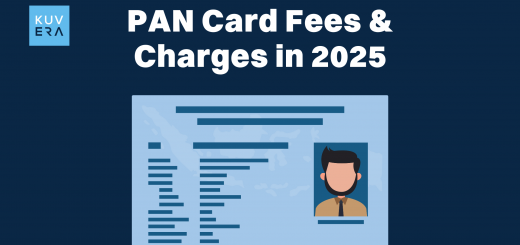“Mutual Funds are subject to market risk” we all have heard this one. We also know that this risk comes with great returns.
However, in regular mutual fund plans, commissions and broker fees can eat up a significant portion of your overall investment.
Confused? No worries, we did the math for you. Check out an example, where 1.5% commission saved per year can increase your wealth by up to 35% in the long run.
The difference between direct plans and regular plans:
Regular Plans pay commissions to the broker or the distributor. This commission is added to the expense ratio of the scheme. So these plans have a higher expense ratio as compared to Direct Plans that do not have commission expenses.
But then why do people opt for Regular plans?
Exactly, it boggles our minds too. So we asked people.
“It’s just 1.5%, right. What’s a big deal?”
Umm, you should really check out the math mentioned above.
“Well, doesn’t the broker’s advice amount to anything?”
Not really, for a very few brokers maybe. Most are just sales agents.
More often than not, most people aren’t aware of how much difference it makes. Let me help you there.
Why Direct MF plans are better than regular plans
- Higher Returns
The returns generated through Direct Mutual funds are higher than that of regular mutual funds, due to the lower expense ratio. As there is no middle-man involved, the AMC will not charge you commission or brokerage fees on Direct plans.
In the case of regular funds, the fund house collects commission through added expense ratio and pays the agent or distributor. That’s why the expense ratio of regular funds is slightly higher than that of direct funds.
- Higher NAV
NAV is the value of one unit in the mutual fund schemes, which also indicates the performance of the fund.
The operating expenses of a fund are reduced from its net AUM, which reflects in its NAV. So lower the expense ratio, the higher the NAVs and vice-versa.
In the case of Direct Funds, there are no brokerage charges, which means lesser liabilities on the AMC thus the NAV of these funds would always be higher than that of the regular funds.
- No risk of mis-selling
Having an advisor may seem ideal for beginners, however, an agent or a third party is more likely to promote schemes that mean more commission for them.
On the other hand, when you directly deal with the fund house, you alleviate the risk of being misled. Hence, opting to invest in direct funds will eliminate the conflict-of-interest scenario.
- Independence
In the case of Direct Mutual Funds, you are in full control of your investments. Yes, this means some homework for you: studying the funds. learning how mutual funds work, how AMCs function, and some key mutual fund concepts.
But guess what, if you want to stay in charge of your investments, you will have to learn all these things eventually. So with a little more effort, direct funds give you the independence to make informed choices and higher returns.
Direct Mutual Funds on Kuvera
Kuvera was India’s first platform to offer direct plans and remains so.
We let you compare-select & buy different fund plans directly from the AMC without paying any commission fee.
Check out Direct Funds plans on Kuvera
If you are planning to switch your regular plans to direct plans, check out our step-by-step guide:
FAQs:
1. What is an expense ratio?
The expense Ratio also sometimes known as the Total Expense Ratio (TER), shows how much of a fund’s assets are used for administrative and other operating expenses. The expense ratio is calculated by dividing a fund’s operating plus management expenses by the total value of the fund’s assets. Therefore, in the case of regular funds, operating expenses reduce the fund’s asset value, which ultimately reduces the investor’s return on investment.
3. How much tax can be saved on mutual funds?
ELSS mutual funds are eligible for tax deductions under the Income Tax Act, 1961. Investments of up to ₹150,000 are tax-free under ELSS mutual funds.
3. How to buy mutual funds in India?
- Log on to Kuvera and set up your account with all the necessary details.
- Select the mutual fund scheme based on your investment objectives and risk tolerance and click on it.
- You must type the amount you plan to invest in the mutual fund scheme and the mode as either one-time or monthly SIP.
- Then click on invest now.
4. How to find the best-performing mutual funds in India?
Just log on to Kuvera, where you will find all the mutual funds with all the important information like their past performance, returns vs index, AUM, TER, Risk, etc. Based on your requirement and risk tolerance, you can select and buy the best mutual fund scheme suitable for you.
Interested in how we think about the markets?
Read more: Zen And The Art Of Investing
Watch/hear on YouTube:
Start investing through a platform that brings goal planning and investing to your fingertips. Visit kuvera.in to discover Direct Plans and Fixed Deposits and start investing today.
#MutualFundSahiHai #KuveraSabseSahiHai! #PersonalFinance










